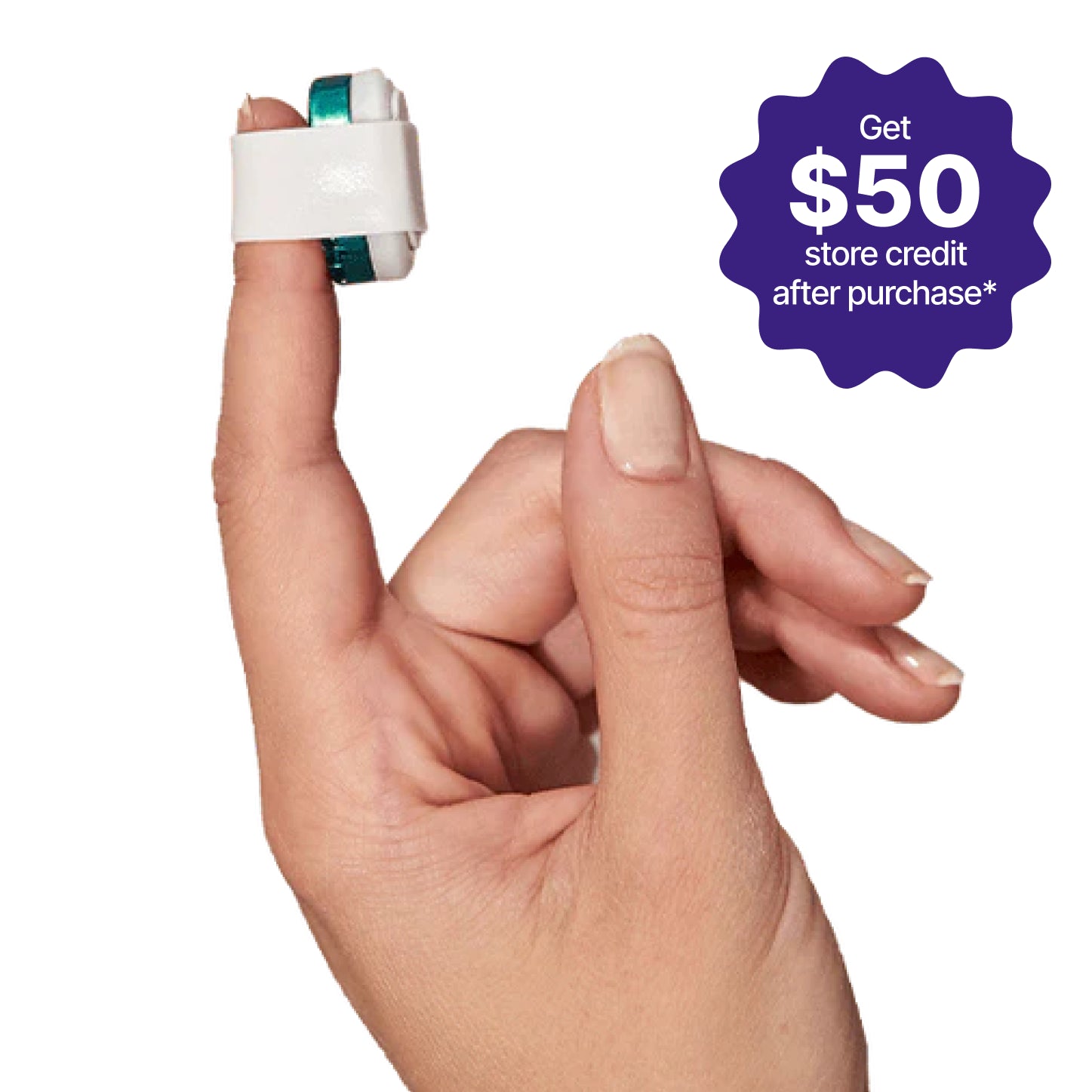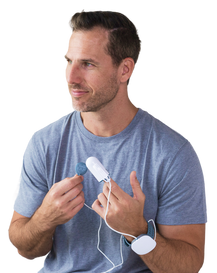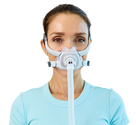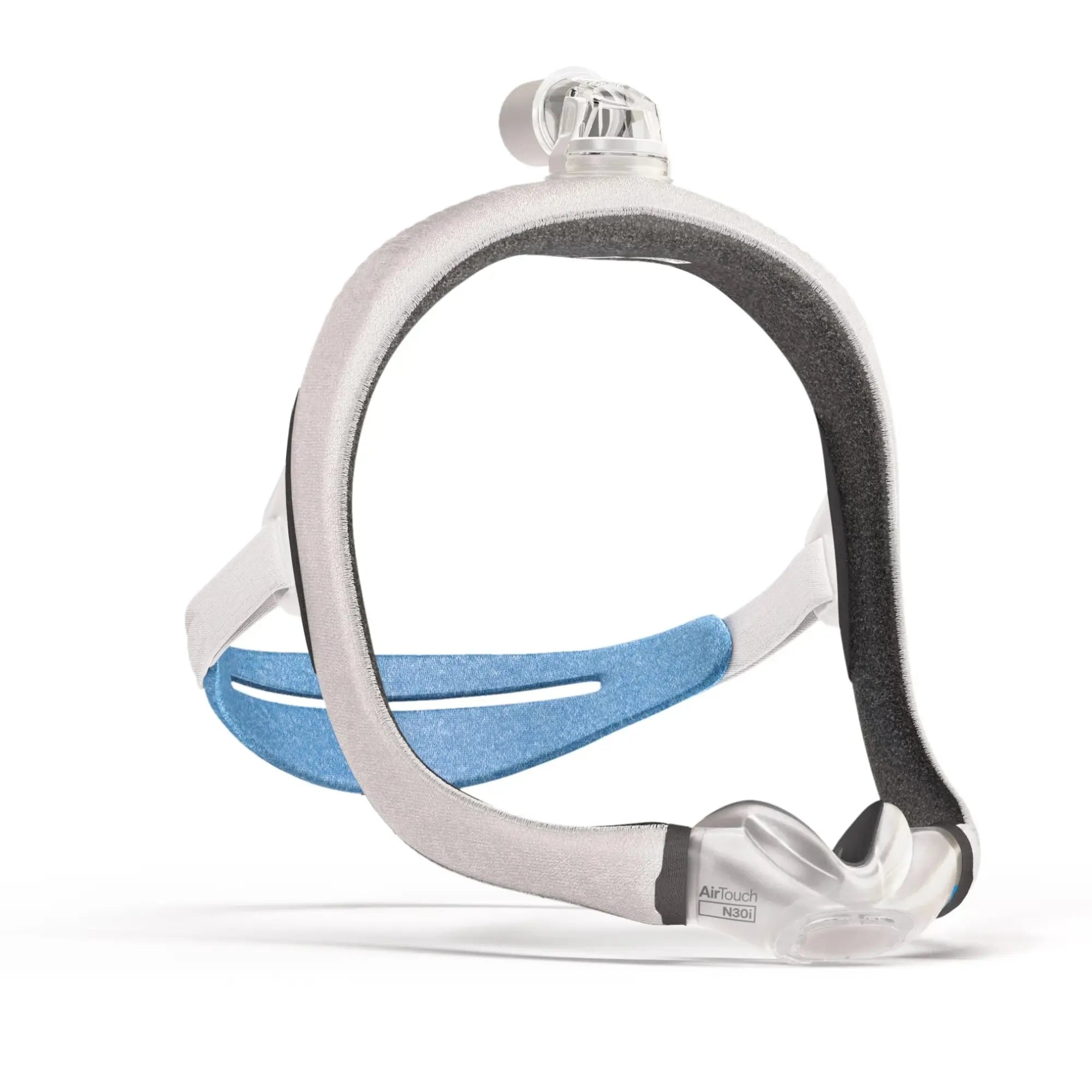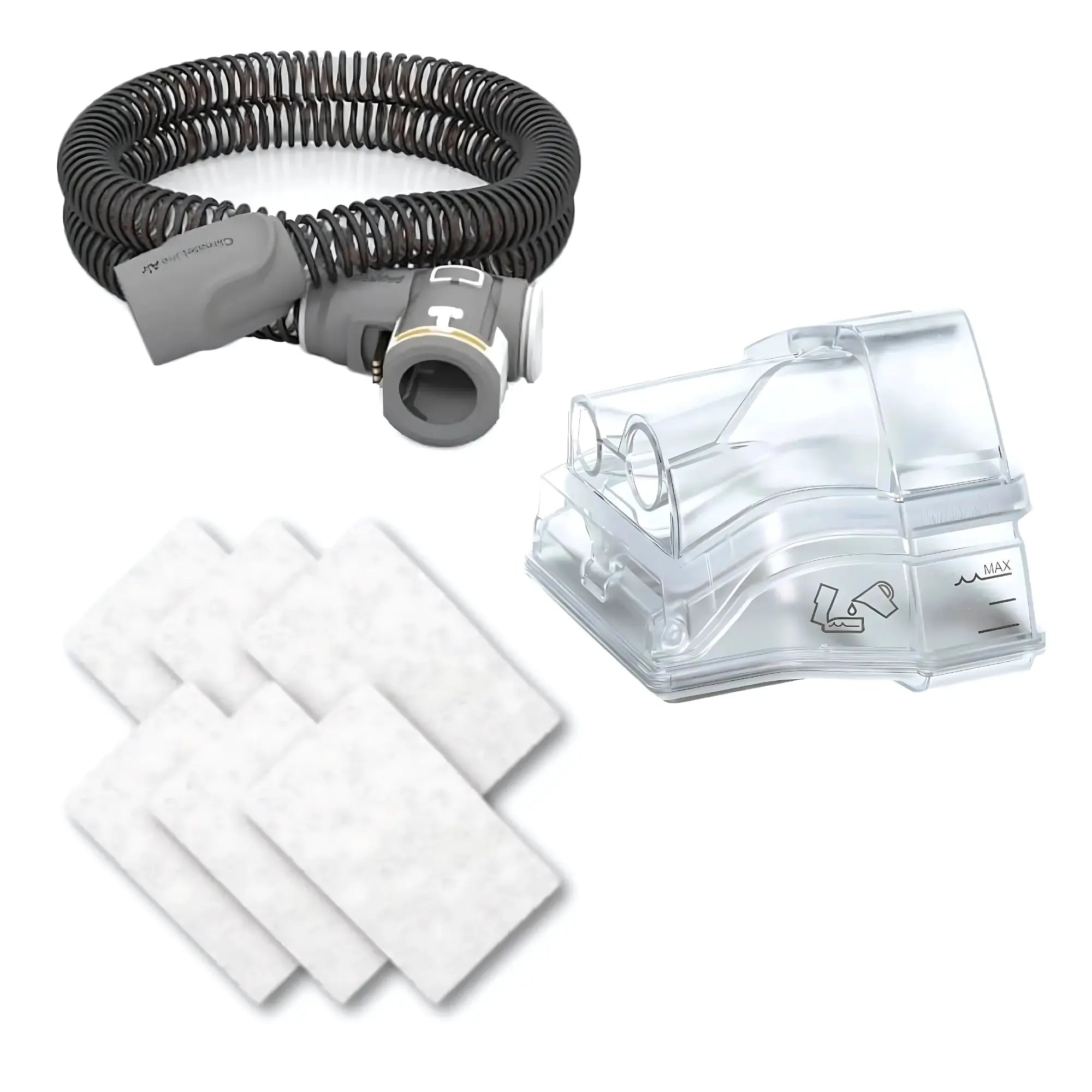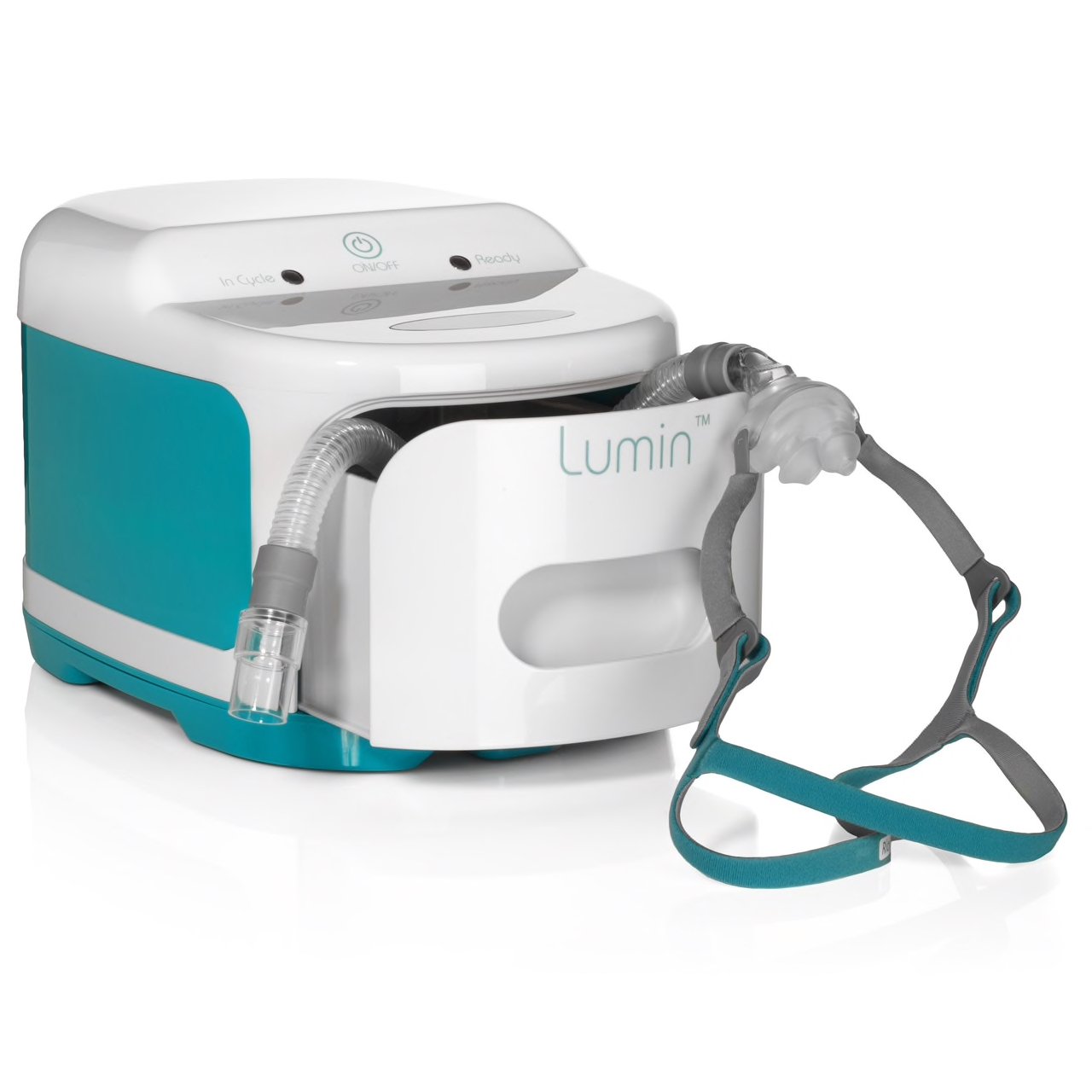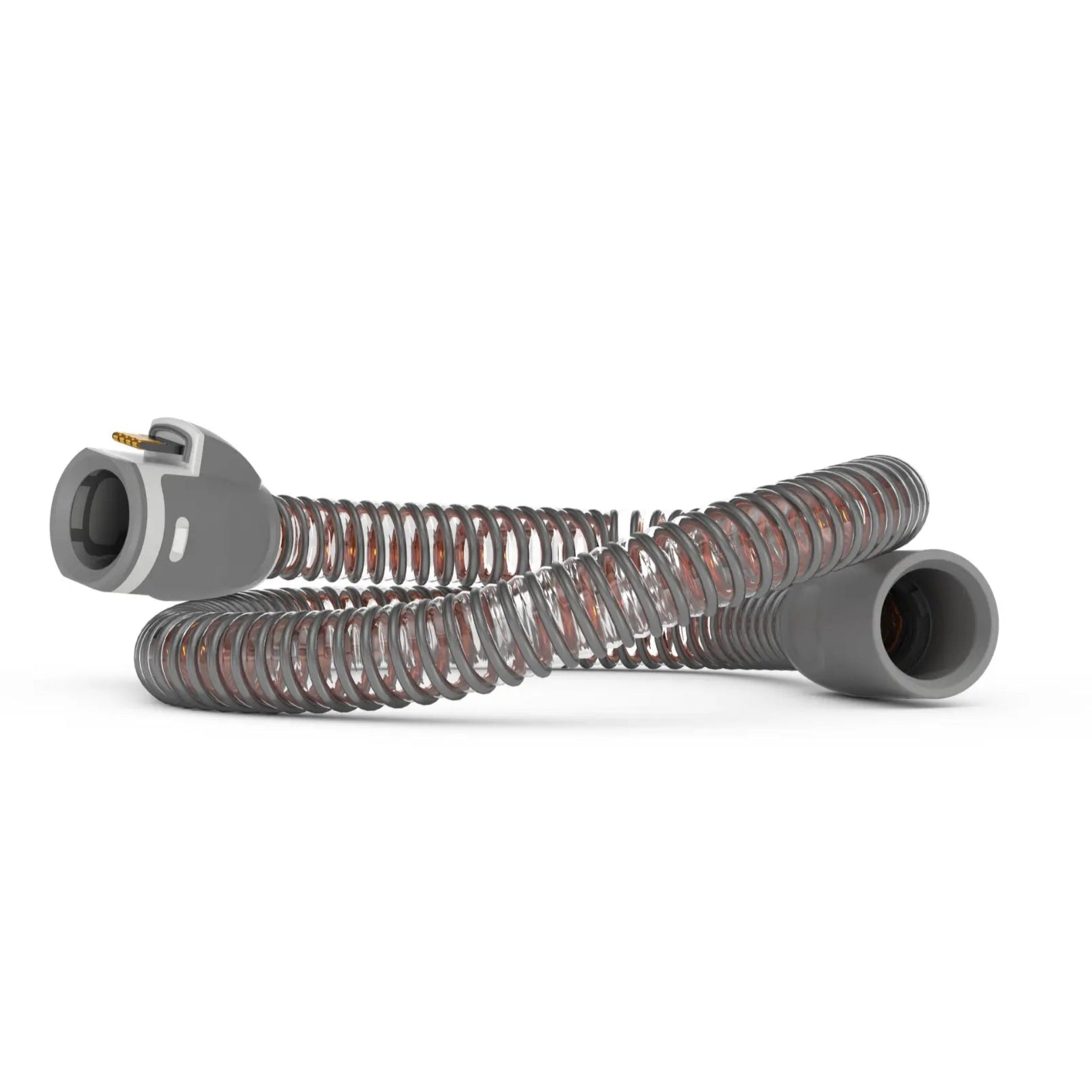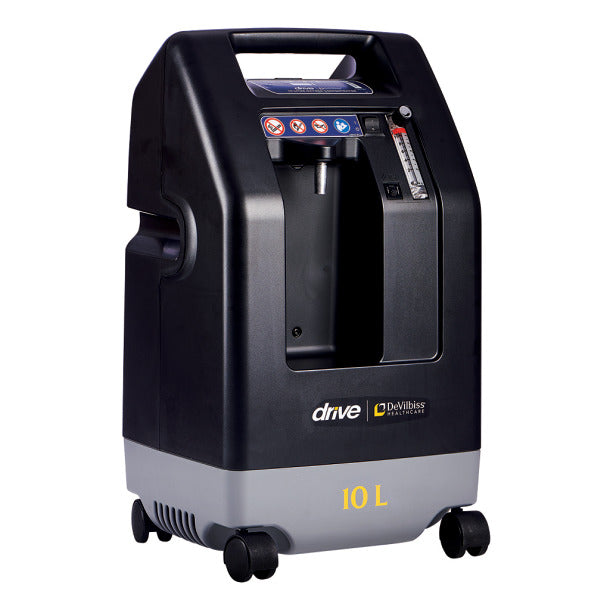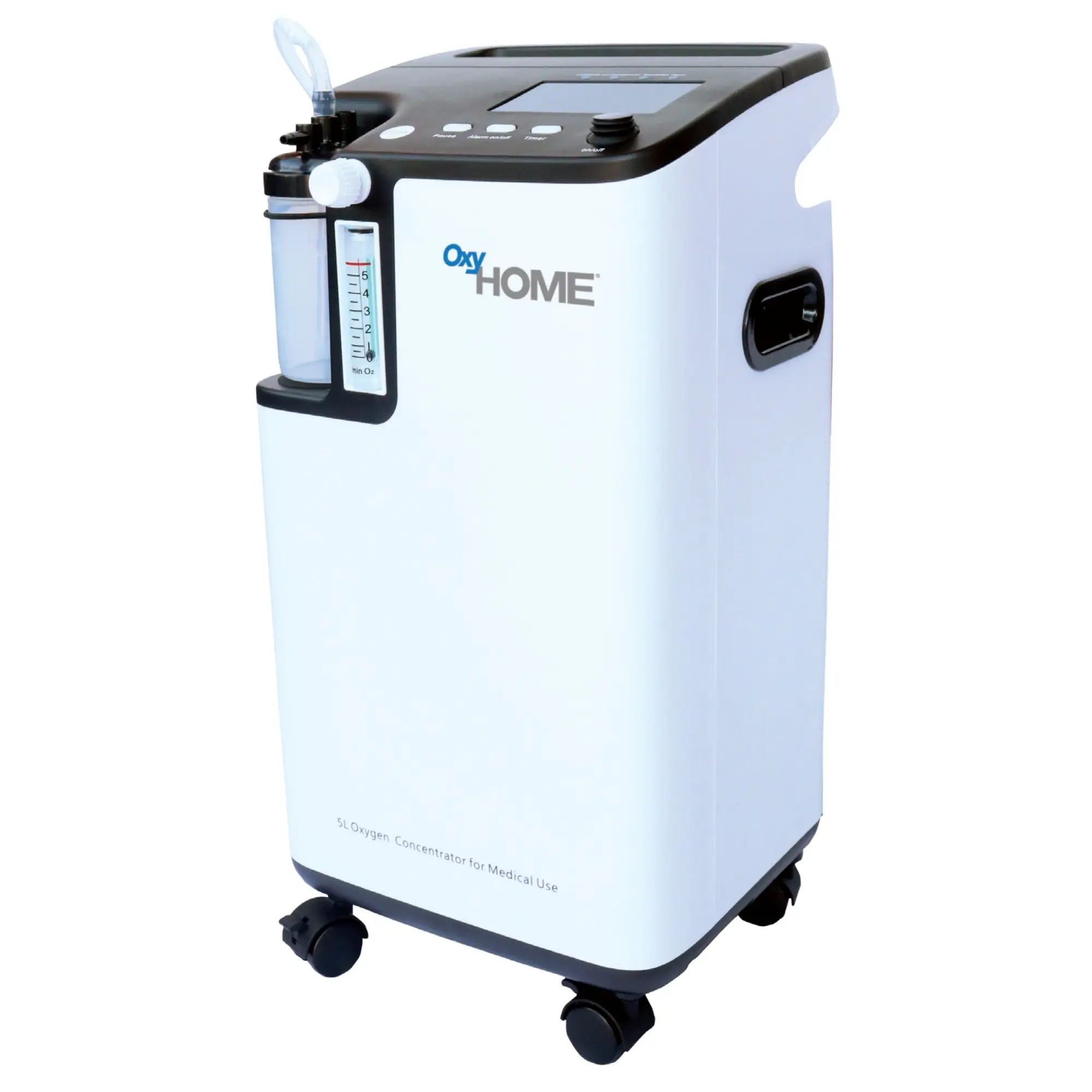Continuous positive airway pressure (CPAP) therapy is one of the most effective treatments for obstructive sleep apnea and other sleep disorders. A key part of this therapy is the CPAP hose, which delivers the necessary air pressure to keep your airway open during sleep. However, neglecting to clean your CPAP hose can lead to harmful germ buildup, impacting both your health and the effectiveness of the treatment.
In this guide, we’ll cover why cleaning your CPAP hose is essential for preventing bacteria and mold growth, how and when to clean it, and share other important tips for maintaining your CPAP machine.
Why You Should Clean Your CPAP Hose
Regular cleaning of your CPAP mask and CPAP tubing is just as important as using your CPAP equipment every night. Cleaning your CPAP equipment and regularly changing the distilled water of its water chamber (or humidifier chamber) has several benefits, which include:
Infection Prevention
The wet and warm environment fostered in a CPAP hose is the ideal breeding ground for bacteria, mold, and other harmful microorganisms. If these germs aren’t removed, they can cause upper respiratory infections, such as sinus infections, and infections of the lower airway, such as pneumonia.
Decreasing Allergic Reactions
Dust, pollen, dead skin cells, and other allergens can accumulate in your CPAP hose, which can cause allergic reactions. Regularly cleaning your CPAP machine can help remove these potential allergens, therefore reducing the risk of allergic reactions.
Extending the Lifespan of Your CPAP Hose
Dirt, oil, sweat, and dead skin cells build up in your CPAP tubing, and they can cause damage and break down over time. If you clean your CPAP hose regularly, its lifespan will increase, and you will avoid premature wear and tear. This can save you money since you won’t need to pay for costly repairs or replacement parts as frequently.
Improves the Performance of Your CPAP Machine
If your CPAP hose is not properly cleaned, the effectiveness of your CPAP therapy can decrease, and will make it harder for you to breathe at night. Regular cleaning of your CPAP hose ensures that you receive the right air pressure for your sleep apnea treatment.
Improved Quality of Sleep
When you have a clean CPAP hose, you can be sure that you are breathing clean, fresh air. This can help improve the quality of your sleep, since poor air quality can cause sleep disturbances and nighttime cough.
Avoiding Unpleasant Odors
If your CPAP hose hasn’t been cleaned for a long time, it can develop an unpleasant smell that will decrease the comfort of using your CPAP machine at night.
Preventing Dryness and Irritation
The buildup that happens in dirty CPAP hoses can impair the CPAP humidifier functions, resulting in dry mouth, and nose and throat irritation upon waking up.
Regularly cleaning your CPAP hose not only facilitates the proper functioning of your CPAP machine, but it also improves your overall quality of sleep, health and well-being.
Cleaning Products for Your CPAP Hose
There are several CPAP cleaning supplies available, but not all of them are suitable for all your CPAP parts. Look for fragrance and alcohol-free cleaning supplies that are approved to be used in your CPAP equipment, to avoid damaging your CPAP machine and leaving toxic residues behind. These are some of the most commonly used cleaning products:
Gentle CPAP Soap / Pre-wash Solution
Mild soap or pre-wash solution along with warm water is a great combination to clean your CPAP mask, as well as your mask cushions, humidifier tank, disposable filters and hose. You can wash all your CPAP equipment with warm soapy water to disinfect it and avoid damaging its components.
In some cases, dish soap can be used to clean your CPAP equipment. However, these kinds of soaps can be too harsh for the silicone parts of your CPAP machines, so it’s better to try to stick with a special soap designed to clean your CPAP mask and hose.

CPAP Hose Cleaning Brush
A CPAP hose cleaning brush is a long and flexible brush that is used to clean inside your CPAP hose. These brushes can reach all the way inside the hose of your CPAP machine to remove any buildup and bacteria that may appear over time.

Additionally, you may opt for The Healthy Hose Pro, the first and only antimicrobial CPAP tube designed to eliminate and prevent up to 99.99% of bacteria.
CPAP Mask Cleaning Wipes
CPAP mask wipes are designed to provide an easy and effective wipe down of all the parts of your CPAP mask (mask cushion, frame, and headgear). They are great for the daily cleaning routine of your CPAP machine because they are easy and convenient to use, and they can effectively remove the oil and dirt left behind in your mask. It's also recommended to take them while traveling to keep up with a clean CPAP routine on the go.

CPAP Cleaning Machines
There are several great CPAP cleaners in the market designed for the proper cleaning and sanitation of all the components of your CPAP machine.
Depending on the model of the machine, it may clean your machine with a combination of tap water and a cleaning solution, or it may use UV light or ozone to kill the germs on your machine.
There are plenty of options when it comes to cleaning your CPAP hose. It's important to find what works best for you, how much time you are willing to allocate for your cleaning routine, and if you will commit to consistency.
It all starts with making CPAP cleaning a habit and part of your daily routine.
Remember to never use:
- bleach
- moisturizing soaps
- chlorine
- scented oils
- alcohol-based cleaning solutions
These products can cause damage to your machine and irritation to your lungs and skin. You can also explore options like the Sinoriko CPAP cleaner, which uses an automated process to simplify disinfection without manual scrubbing.
How to Clean Your CPAP Hose Effectively? A Step-by-Step Routine
Cleaning your CPAP hose and the other parts of your CPAP machine is a simple process that can be done in a few simple steps.
1. Unplug your CPAP machine:
Make sure that your CPAP machine is fully unplugged before you clean it to avoid any malfunction.
2. Disconnect the hose from your CPAP machine:
Follow the manufacturer’s instructions for this step to ensure that you don’t damage your CPAP machine. Make sure that you disassemble every part of your CPAP machine, including the tubing, water chamber, and mask.
3. Clean the hose with soap and water:
Fill a sink or bowl with warm water and a mild soap or cleaning solution. Then place your CPAP hose in the water and move it around for a few minutes.
4. Use your CPAP cleaning brush:
Insert a CPAP hose cleaning brush into one end of the hose, and push it carefully all the way through the other end of the hose. Move the brush back and forth several times to remove any buildup that may have formed.
5. Rinse your CPAP hose with water:
Once you are done with the cleaning tube brush, rinse your hose thoroughly with water until all the debris and soap have been washed away from the inside and outside.
6. Hang the hose to dry:
Hang your hose to air-dry in a towel rack or shower rod. Allow the hose to be completely dry before reconnecting it to the CPAP machine.
When cleaning your CPAP hose, you can also take the time to clean the other parts of your CPAP machine. However, with CPAP cleaning machines you can clean all your CPAP supplies at once:
-
Clean your CPAP mask: Use CPAP mask wipes or a damp cloth to keep your CPAP mask clean and free of debris that accumulates over time.
-
Clean the water chamber: Empty the water chamber, and then clean it with a mix of mild soap or cleaning solution and warm water. Then, scrub the chamber thoroughly and rinse it with water. Dry it with a clean towel, and then you can fill it again with distilled water
It’s important to fill your CPAP water chamber with distilled water instead of tap water, since distilled water doesn’t contain the minerals you can find in other types of water, which can create buildup inside your water chamber and damage your CPAP machine.
If you want further instructions or a visual guide on how to clean your CPAP tubing, you can check out this video.
CPAP Hose Cleaning Frequency: How Often Should You Clean Your CPAP Hose?
CPAP tubing should be cleaned weekly. Other CPAP parts that should be cleaned weekly are reusable filters, CPAP masks, and headgear. Your CPAP mask cushion should be cleaned daily.
How often you should clean your CPAP machine is going to depend on several factors:
Usage:
If you use your CPAP machine every night, you should do a weekly cleaning of your CPAP hose. However, you can do it more sparingly if you use it less frequently.
Environment:
If you live or store your CPAP machine in a dusty or humid place, you may need to clean your CPAP hose more frequently. If your CPAP machine is in a humid place or is constantly getting covered with dust or pet dander, debris buildup inside the hose can increase, which in turn will increase the risk of respiratory infections.
Health conditions:
If you have a weakened immune system or are currently suffering from an upper or lower respiratory infection, daily cleaning of your CPAP machine is recommended to reduce the risk of catching an infection or worsening the current one.
The water tank of your CPAP machine should be cleaned weekly, but you need to change the distilled water inside of it daily. If you are using disposable filters, you should check them every week and change them when they appear dirty or according to the manufacturer’s instructions.
General Maintenance of Your CPAP Machine
As for the general maintenance of your CPAP machine, this is how often you should check the different parts of your CPAP device:
- Check the mask cushion and pillows for deterioration monthly.
- Check the humidifier or water tank for cracks and pits monthly.
- Check the CPAP tubing for holes and tears every three months.
- Check the mask headgear or chin strap for loss of elasticity every six months.
- Check the reusable filter at the back of your CPAP machine for buildup of dust and debris every six months.
- Get the pressure of your CPAP machine tested at an accredited outlet every two years.
FAQs
Below, we give you the answers to some of the most common questions CPAP users currently ask about the cleaning of their CPAP hose:
What Happens if I Don’t Clean My CPAP Hose?
If you don’t clean your CPAP hose regularly, bacteria, mold and other microorganisms can accumulate in the hose and cause upper and lower respiratory infections, such as sinusitis and pneumonia, as well as other health problems related to the respiratory system and the skin.
Furthermore, if your CPAP hose has too much buildup from being dirty for long periods of time, there can be damage and leaks in your CPAP system. This will not only harm your CPAP hose but also your pocket as you’ll need to replace them more often, and the effectiveness of your CPAP therapy, as the CPAP machine won’t be able to consistently deliver the right air pressure level for you.
How Often Should I Replace My CPAP Hose?
CPAP hoses should be replaced every three months, but this can change according to its usage and condition. As time passes, your CPAP hose can become damaged, which makes it less effective, as leaks can form, and increases the risk of infection since germs have another point of entry to the CPAP system. Check our replacement calendar.
Can UV Light and Ozone be Used to Clean a CPAP Machine?
UV light and ozone can certainly be used to clean a CPAP machine, as long as they are used correctly. These methods are great for killing the bacteria and other germs present in your CPAP machine, but they are not as effective at removing buildup dirt and oils.
What’s the Best Way to Clean a CPAP Hose?
The most effective way to clean a CPAP hose is to soak it in warm water with mild soap or a vinegar-water solution (1 part vinegar to 3 parts water). After soaking, thoroughly rinse the hose and hang it to air dry completely before using it again. For extra convenience, you may use CPAP cleaning machines and accessories.
Can I Use Vinegar to Clean My CPAP Hose?
Yes, a vinegar solution is an effective and safe way to clean your CPAP hose. Mix 1 part white vinegar with 3 parts water, soak the hose for 30 minutes, then rinse it thoroughly with clean water and let it dry.
Can I Clean My CPAP Hose in the Dishwasher?
Most CPAP hoses are not dishwasher-safe. While it might be tempting, cleaning your CPAP hose in a dishwasher can damage the material and reduce the hose’s lifespan. It’s best to follow the manufacturer’s cleaning instructions. For an easier and safer option, consider using a CPAP Cleaning Machine that automates the sanitizing process and helps maintain your equipment in optimal condition.
What Are the Signs My CPAP Hose Needs to Be Replaced?
Signs that your CPAP hose needs replacing include visible cracks or tears, stiffness, discoloration, foul odors, and persistent air leaks. If you notice any of these, it’s time to replace your hose.
Can I Clean My CPAP Hose with Bleach?
Using bleach to clean your CPAP hose is not recommended. Bleach can be too harsh and may damage the hose material, making it less effective. Stick to mild soap, vinegar solutions, or CPAP-specific cleaning products.
What Happens If Water Gets Inside My CPAP Hose?
If water gets inside your CPAP hose, it’s important to dry it thoroughly before using it again. Simply hanging it up and allowing it to air dry can usually do the trick. Using a hose dryer or blowing air through the hose can speed up the process.
Taking care of your CPAP machine is taking care of your health! So remember to clean your CPAP hose regularly, with appropriate cleaning products, to obtain the best performance possible from your CPAP device.
Ensure optimal performance of your CPAP machine by not overlooking the importance of cleaning its hose and other parts.



